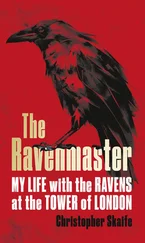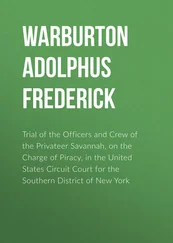Dale nods, thinking of Esther and myself, himself and Verna. Juxtapositions.
“So,” says Kriegman. “Imagine nothing, a total vacuum. But wait! There’s something in it! Points, potential geometry. A kind of dust of structureless points. Or, if that’s too woolly for you, try ‘a Borel set of points not yet assembled into a manifold of any particular dimensionality.’ Think of this dust as swirling; since there’s no dimension yet, no nearness or farness, it’s not exactly swirling as you and I know swirling but, anyway, some of them blow into straight lines and then vanish, because there’s nothing to hold the structure. Same thing if they happen, by chance—all this is chance, blind chance it has to be, Jesus”—Kriegman is shrinking, growing stooped; his chins are melting more solidly into his chest; he bobs like a man being given repeated blows on the back of his head—“if they configurate into two dimensions, into three, even into four where the fourth isn’t time; they all vanish, just accidents in this dust of points, nothing could be said to exist, until—even the word ‘until’ is deceptive, implying duration, which doesn’t exist yet—until bingo! Space-time. Three spatial dimensions, plus time. It knots. It freezes. The seed of the universe has come into being. Out of nothing. Out of nothing and brute geometry, laws that can’t be otherwise, nobody handed them to Moses, nobody had to. Once you’ve got that seed, that little itty-bitty mustard seed—ka- boom ! Big Bang is right around the corner.”
“But—” Dale is awed not so much by what this man says as by his fervor, the light of faith in his little tripartite spectacles, the tan monotone of his face and its cascading folds, his receding springy hair, his thick eyebrows thrust outward and up like tiny rhinoceros horns. This man is living, he is on top of his life, life is no burden to him. Dale feels crushed beneath his beady, shuttling, joyful, and unembarrassed gaze. “But,” he weakly argues, “‘dust of points,’ ‘freezes,’ ‘seed’—this is all metaphor.”
“What isn’t?” Kriegman says. “Like Plato says, shadows at the back of the cave. Still, you can’t quit on reason; next thing you’ll get somebody like Hitler or Bonzo’s pal running things. Look. You know computers. Think binary. When matter meets antimatter, both vanish, into pure energy. But both existed; I mean, there was a condition we’ll call ‘existence.’ Think of one and minus one. Together they add up to zero, nothing, nada, niente, right? Picture them together, then picture them separating —peeling apart.” He hands Dale his drink and demonstrates separating with his thick hairy hands palm to palm, then gliding upward and apart. “Get it?” He makes two fists at the level of his shoulders. “Now you have something, you have two somethings, where once you had nothing.”
“But in the binary system,” Dale points out, handing back the squeezable glass, “the alternative to one isn’t minus one, it’s zero. That’s the beauty of it, mechanically.”
“O.K. Gotcha. You’re asking me, What’s this minus one? I’ll tell you. It’s a plus one moving backward in time. This is all in the space-time foam, inside the Planck duration, don’t forget. The dust of points gives birth to time, and time gives birth to the dust of points. Elegant, huh? It has to be. It’s blind chance, plus pure math. They’re proving it, every day. Astronomy, particle physics, it’s all coming together. Relax into it, young fella. It feels great. Space-time foam.”
Kriegman is joking; Dale prefers him zealous, evangelical on behalf of nonbelief. Esther has vanished from the archway. New guests keep arriving: Noreen Davis, the black receptionist who so smilingly gave him those forms seven months ago, with her bald co-worker in the Divinity School front office, and somebody who looks like Amy Eubank but can’t be, his recognition apparatus must be out of whack. He masochistically asks Kriegman, “How about the origin of life? Those odds are pretty impossible, too. I mean, to get a self-replicating organism with its own energy system.”
Kriegman snorts; he twists his face downward as if suddenly very shy; his whole body beneath its garland, in its dirty corduroy jacket with patched elbows and loose buttons, appears to melt and then to straighten again into a bearing almost military. “Now that just happens to be right up my alley,” he tells Dale. “That other stuff was just glorified bullshit, way out of my field, I don’t know what the hell a Borel set of points are. But I happen to know exactly how life arose; it’s brand-new news, at least to the average layman like yourself. Clay. Clay is the answer. Crystal formation in fine clays provided the template, the scaffolding, for the organic compounds and the primitive forms of life. All life did, you see, was take over the phenotype that crystalline clays had evolved on their own, the genetic pass-down factor being entirely controlled by the crystal growth and epitaxy, and the mutation factor deriving from crystal defects, which supply, you don’t need me to tell you, the stable alternative configurations you need for information storage. So, you’re going to ask, where’s the evolution? Picture the pore space of a sandstone, young fella. Every rainstorm, all sorts of mineral solutions are percolating through. Various types of replicating crystals are present, each reproducing its characteristic defects. Some fit together so tightly they form an impervious plug: this is no good. Others are so loose they’re washed away when the rains come: this is no good either. But a third type both hangs in there and lets the geochemical solutions, let’s even call them nutrients, wash through: this is good. This type of crystal multiplies and grows. It grows. Now in that sandstone pore you have a sticky, permeable paste that replicates itself. You have a prototype of life.” Kriegman takes a long swallow of my Almaden and smacks his lips. A half-empty glass sits abandoned on the walnut end table beside the red settee, and my beloved neighbor deftly swaps it with his own, emptied glass.
“But—” Dale says, expecting to be interrupted. “But, you’re going to say, how about us? How were the organic molecules introduced? And why? Well, not to get too technical, some of the amino acids, di- and tricarboxylic acids, make some metal ions, like aluminum, more soluble. This gives us a proto-enzyme. Others, like the polyphosphates, are especially adhesive, which, like I say, has survival value in this prezoic world we’re trying to picture. Heterocyclic bases like adenine have a tendency to stick between the layers of clay; pretty soon, relatively speaking, you’re going to get some RNA-like polymer, with its negatively charged backbone, interacting with the edges of clay particles, which tend to bear a positive charge. Then —listen, I know I’m boring the pants off you, I can see from your eyes you’re dying to mix it up with somebody over my shoulder, maybe one of my girls. Miriam’s the one you might take a shine to, if you don’t mind a little Sufi propaganda; it’s the no-alcohol part of it that I couldn’t hack. Then, as I was saying, once you’ve got something like RNA in not the primordial soup this time—nobody in the know ever was too comfortable with that crackbrained theory: too—what’s the word?—soupy—but a nice crisp paste of clay genes, organic replication is right around the corner, first as a subsystem, a kind of optional extra parallel with the crystal growth, and then taking over with that gene swap I mentioned earlier, and the clay genes falling away, since the organic molecules, mostly carbon, can do the job better, once they’re established. Believe me, pal, it fills a lot of theoretical holes. Nothing to matter, dead matter to life, smooth as silk. God? Forget the old bluffer.”
Читать дальше












